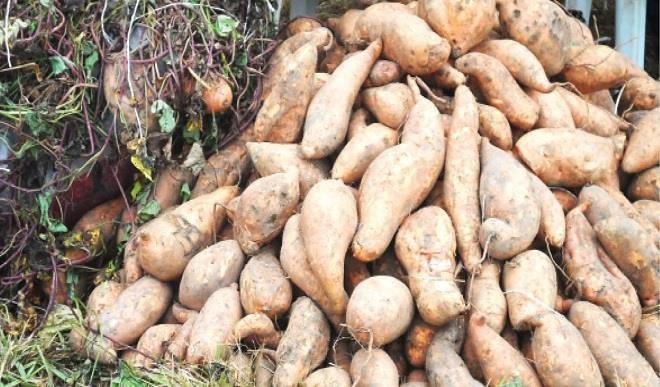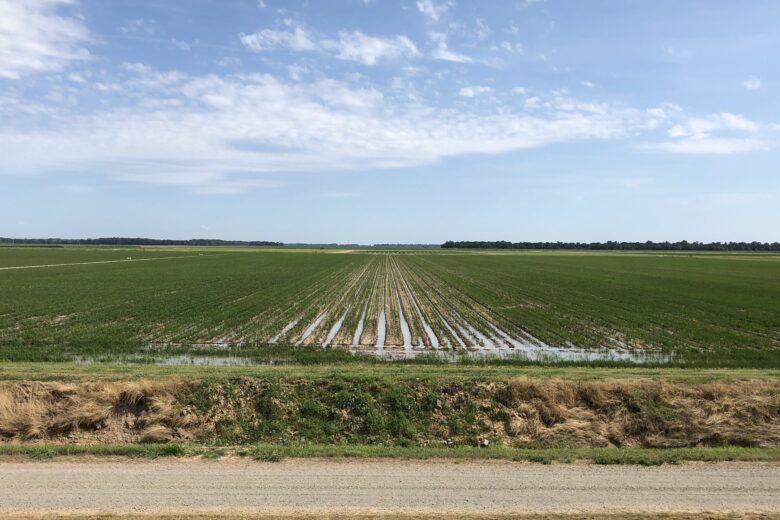How To Grow Beans In South Africa- It’s possible to make money growing beans in your backyard in South Africa. Many steps are involved in growing beans, and we’ll go over them all here.
First, find suitable farmland, prepare it for cultivation by burning the bushes, buy a hybrid species of beans, and begin nursing them before planting the beans. Finally, plant and maintain weed and pest control on the farm.
There are numerous advantages to growing beans in South Africa, including the fact that they are a major source of protein and that demand for them is always strong.
We’ll walk you through the process of planting beans in South Africa step by step.
How To Grow Beans In South Africa Beginners Guide [Dry Beans Farming]
It is possible to cook beans in many different ways. Some common methods include boiling, frying, or baking.
They grow beans for several reasons, not the least of which being that they’re both nutritious and a good investment. From now on, we’ll go over the entire process of planting beans.
Read Also: How To Grow Pepper In South Africa [ Beginners Guide Pdf]
Step 1: Buy or lease Farmland with quality soil
The first step in being a farmer is to secure your own plot of land. Farmland is one of the most important factors to consider when deciding on a location to grow your beans.
There are a few things to keep in mind when looking for farmland in South Africa for beans:
Fertility Of The Soil
Soils that are well-drained, rich in organic matter, and fertile are necessary for the growth of beans. At lower elevations, the growth and maturation of bean plants are also quicker.
Climatic Type.
In order to avoid too much rain during the blossoming time, the seasons should be carefully picked. Frost must be avoided if beans are to grow properly. They require a moderate temperature.
Step 2: Land Clearing and Preparation of farmland
Weed and hardpan-free soil are ideal for the planting of bean plants’ seeds. The first step is to clean the farmland of bushes and remove any trees or plants that may impede the smooth operation of your farm.
Read Also: How To Grow Onions In South Africa [Beginners Guide]
Step 3: Order For Quality Beans Seed
Seed selection is critical if you want to avoid low-quality crops. It is best to stay away from seeds that are wrinkled or diseased, or that are otherwise damaged.
Bean seed should be purchased from a well-known agro store that carries high-quality agro supplies, such as a farm supply store. Comment below if you’d like some advice on where to buy agricultural items in South Africa.
Read Also: How To Start Growing Cucumber In South Africa [Beginners Pdf]
South Africa Bean Seed Species Variety
Following are the most frequent beans seed in South Africa and its surrounding environment.
- Espada
- Provider
- Class act
- Derby
- Star 2052
- World cup
- Malelaan
- Champ
- Wintergreen
- Contender
- Imali
- Star 2000
Step 4: Planting And Spacing
Rainfall is a good time to plant beans, as they are more likely to thrive.
Small holes, one to two inches deep and 30 to 15 centimeters apart, should be dug in a uniform row in your field after it has been harrowed.
The rows should be spaced about 50cm apart, which will make it easier to handle. Fertilize each hole with farmyard or DAP fertilizer before planting one to two seeds. Cover with a thin layer of dirt. In order to successfully intercrop with a maize farm, the same attention must be used.
Step 5: Add Manure or Fertilizer
Despite the fact that beans are one of the most low-maintenance crops, you can use conventional farming methods to make sure that your bean production is optimized.
Soil quality can be improved by using moderate amounts of CAN or manure. Either a surplus or a dearth of nutrients can be detrimental to the health of beans.
Step 6: Practice Weeding and Thining
This is the process of removing undesirable plants from the area where your beans were grown. Beans will flourish to their fullest potential if you keep an eye out often for disease or pests. Pesticides may be necessary in order to protect beans against pests.
If you follow these rules, your beans will develop fast and joyfully within a few weeks, and you may even see blooms emerging.
Step 7: Harvesting When Mature
A bean’s maturity can take anywhere from 80 to 120 days (2-4 months) depending on the variety of beans and the environment.
To be ripe for harvest, a bean’s pod should turn yellow or brown and the seeds begin to fall out.
Drying your beans before storing them is now an option, as long as they aren’t over-ripe.
Beans are commonly harvested by removing the entire plant, drying it in the sun for a few days, and then breaking up the pods and collecting the beans inside it. The pods can later be used to produce feed or manure.
Step 8: Storing the beans
In order to protect the beans, insecticides must be sprayed on them before they are packed and shipped.
Step 9: Marketing And distribution
Once the beans have been harvested and kept in bags, they are now ready to be sold. It is possible to buy beans in kilograms or debes for small-scale traders.
Beans can be harvested from an acre of land in 90 days, resulting in up to 20 bags of 90-kilogram beans, with each bag costing as much as 1000 South African Rands.
Schools, institutions, fast food restaurants (such as Burger King and Wendy’s), hotels, and open marketplaces are all good places to sell beans in South Africa.
Dry Beans Production Pdf:
To further your study on beans farming in South Africa, here is a Pdf guide to aid further studies, you can watch the below videos to get more information about dry beans farming in South Africa as well.
Is Beans Farming Profitable In South Africa?
Beans farming is a lucrative farming business in Ghana for any farmers who engage in it in a commercial form.
How Long Do Beans Take To Grow In South Africa?
Usually, it takes about 120 days for beans to reach full maturity for harvesting.
What Month Do You Plant Beans In South Africa?
The best month to plant beans in south Africa is April or march or the later months when rains are few, November and December.
How Much Is A Ton Of Beans In South Africa?
Dry beans are sold at the rate of R15,000 per ton.
Green Beans Farming In South Africa
To start green beans farming in South Africa, First, find suitable farmland, prepare it for cultivation by burning the bushes, buy a hybrid species of beans, and begin nursing them before planting the beans. Finally, plant and maintain weed and pest control on the farm.
Is Beans Farming Profitable In South Africa
Yes, beans farming is a profitable business to venture into in South Africa. Beans mature in less than 2months and you can grow as many times in a year, which is an open check to how much you wish to earn on beans farming in a year.
Is Beans Farming Profitable
Yes, beans farming is a profitable business to venture into in South Africa. Beans mature in less than 2months and you can grow as many times in a year, which is an open check to how much you wish to earn on beans farming in a year.
How To Grow Beans In South Africa
To dry beans farming in South Africa, First, find suitable farmland, prepare it for cultivation by burning the bushes, buy a hybrid species of beans, and begin nursing them before planting the beans. Finally, plant and maintain weed and pest control on the farm.
Types Of Beans Grown In Africa
Following are the most frequent beans seed in South Africa and its surrounding environment:
- Espada
- Provider
- Class act
- Derby
- Star 2052
- World cup
- Malelaan
- Champ
- Wintergreen
- Contender
- Imali
- Star 2000
How To Grow Broad Beans In South Africa
To grow broad beans farming in South Africa, First, find suitable farmland, prepare it for cultivation by burning the bushes, buy a hybrid species of beans, and begin nursing them before planting the beans. Finally, plant and maintain weed and pest control on the farm.
Dry Beans Farming In South Africa
To dry beans farming in South Africa, First, find suitable farmland, prepare it for cultivation by burning the bushes, buy a hybrid species of beans, and begin nursing them before planting the beans. Finally, plant and maintain weed and pest control on the farm.
How Many Bags Of Beans Per Acre
Ideally, you can harvest at least 11 bags of beans in an acre of beans farmland provided all things are being equal.
How Many Bags Of Beans Can 1 Acre Produce
Ideally, you can harvest at least 11 bags of beans in an acre of beans farmland provided all things are being equal.
Conclusion
Farming beans, which is one of the fastest-growing crops, is mostly ignored by most farmers. You can join the ranks of today’s bean growers by getting into this line of work.
Let us know your thoughts in the section provided below.





I want farm beans but l only know how to plant and harvest them with no knowledge of how to look after them as plants.
You’re talking about maintenance of the farm.
What you can actually do is, immediately you clear the farmland.
Get chemical that can prevent quick emergence of weed. Ensure you mulch the soil surface to prevent quick growth of weed.
And always include it in your itinerary to visit the farm at least once in a week